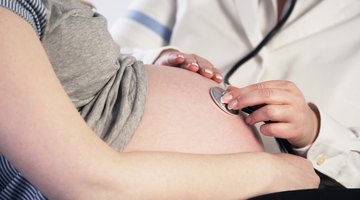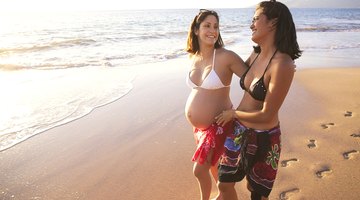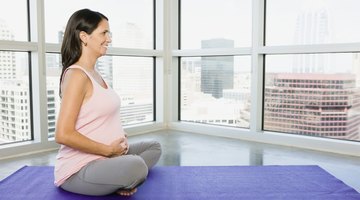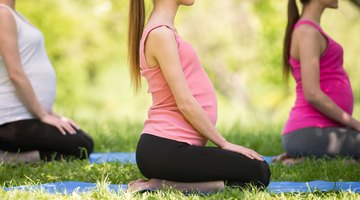Cramping When Exercising in Pregnancy
Being pregnant is simultaneously joyful, stressful, exciting and exhausting.
By easing some of the discomforts of pregnancy, regular and appropriate exercise may help even out the emotional rollercoaster ride.
Mild cramping during exercise is not uncommon during pregnancy, and is not a cause for alarm, but severe or persistent cramps are a signal to call your doctor right away. Consult your doctor before exercising when pregnant, and only proceed if she says your chosen form of activity is safe.
Exercise During Pregnancy
Exercise releases endorphins which can boost your mood and energy level.
It also reduces constipation, promotes restful sleep and helps you and your baby prepare for the birth by strengthening and stretching muscles. If you have been exercising all along, you doctor will probably advise you to continue; if you have been inactive, talk to your doctor about beginning a gentle exercise program. Remember to stay hydrated with plenty of juice or water, and dress in loose-fitting clothes, a bra that offers adequate support, and comfortable, supportive shoes.
Common Cramp Causes

What Exercises Can You Do With an Umbilical Hernia?
Learn More
A common cause of cramping during exercise is round ligament pain.
The round ligament supports the uterus and expands while you are pregnant; a cramp can be triggered by any movement, even one as mild as going from standing to sitting.
You will feel a sharp pain in your abdomen that may extend to your hip or groin, but it shouldn't last more than a few seconds. Stop exercising and rest. If the pain doesn't pass within a few minutes, call your doctor. The American Pregnancy Association reports that daily stretching exercises can help prevent round ligament pain.
Abdominal cramps during pregnancy can also be caused by overeating or by having constipation.
Stop exercising and rest if you have abdominal cramps while exercising. If the pain doesn't resolve, or worsens, call your doctor at once, especially if the pain is accompanied by fever, chills, bleeding or abnormal discharge.
Dangerous Cramps
Severe cramping during the first trimester, often with vaginal bleeding, can be a sign of an impending miscarriage; Family Education reports that about one in five pregnancies end in a miscarriage within the first three months of pregnancy.
Sharp abdominal cramping can also indicate an ectopic pregnancy, a medical emergency in which the fertilized egg has settled somewhere outside the uterus.
Severe cramping can also be an indication of early labor. Intense cramping that develops during exercise -- or at any other time -- is a signal to call your doctor immediately, whether there is bleeding or not.
Recommended and Prohibited Exercises

Pilates & Pregnancy in the First Trimester
Learn More
Doctors recommend that pregnant women exercise for 30 to 45 minutes three to five times a week. Your own perceptions should guide you, however; if you feel fatigued or short of breath, stop. Dancing, low-impact aerobics, swimming -- which can provide a refreshing sense of buoyancy and weightlessness -- stationary bicycling and brisk walking are all good choices. Yoga, which promotes breath control that can come in handy during labor, is considered particularly beneficial. However, you should avoid lying on your stomach or back after the first trimester. Also bypass any activity that could lead to falls or abdominal injury.
The American Pregnancy Association notes that you should not attempt water skiing, downhill snow skiing, ice skating, roller blading or rock climbing. Due to increased chance of birth defects and preterm delivery, the APA adds that pregnant women should not scuba dive.











